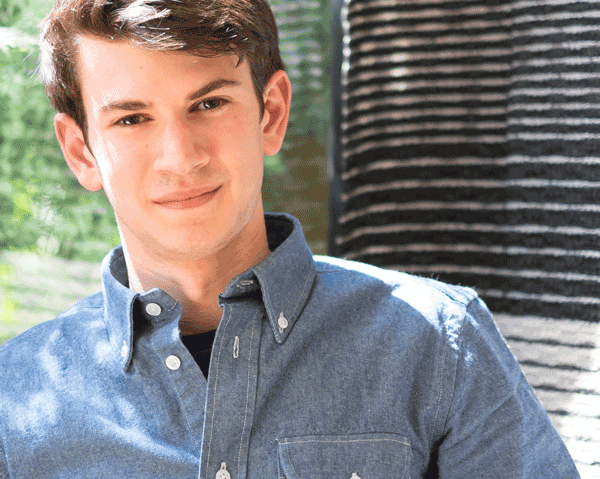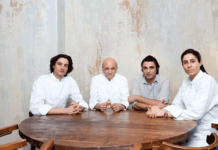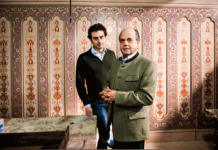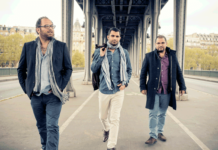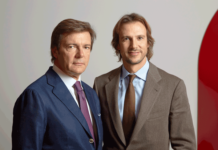Interview with Sam Reich
Sam Reich has always done things differently. At 13, he set up his own tech company. This first small venture put Sam through university. The fact is entrepreneurship runs in the young Englishman’s blood. He is, after all, the grandson of famed entrepreneur and textile designer, Tibor Reich. With humble beginnings in a small weaving unit in Stratford-upon-Avon, Tibor soon established himself as a vanguard designer who disrupted traditional techniques, and was consequently one of the most important contributors to the textile industry of the 50s and 60s. When Tibor Reich died in 1996, he left behind one of the largest design archives in Britain.
Sam Reich studied history at the University of Bristol for good reasons. After graduating, he put his degree to good use and made way through his grandfather’s archive with the prospect of reviving the family business.
Tharawat magazine spoke to the young entrepreneur about his family legacy, how he deals with fear, and the revival of his grandfather’s company.
[ms-protect-content id=”4069, 4129″]
What makes you so passionate about your family’s legacy?
I suppose it’s about exploring my family history. I am not sentimental, but feel it is very much a part of who I am.
Growing up, I was made aware of our rich family history and all the interesting stories that lead to my grandfather’s career. We used to go to my grandfather’s house in Warwickshire and I would always sneak away to go through the archives full of fantastic designs from the 1940s-70s. I suppose that’s what led me to become so fascinated with design and European social history.
Later, at university we learnt how to interpret history, and how to go through and make sense of archives. I just applied that knowledge to my grandfather’s archive so I could perpetuate his story. Our heritage is intertwined with really important stories of 20th century design and art. My grandfather’s company designed for the Queen’s wedding present for example. People love to buy into a brand with such a rich heritage. The reality of the business, however, is that it runs on numbers. Heritage alone doesn’t cut it.
What core activities are you focusing your strategy on?
The archive is vast and spans 40 years of design history including all sorts of textiles, plastics, woven fabrics, ceramics, and couture designs. The key is narrowing down the archive. We are very much going back to the roots of Tibor, which is woven and printed textiles, and are following the same trajectory of my grandfather. We intend to grow the brand to what it used to be – a full lifestyle brand, ranging from fabrics to pottery. The most important thing is to understand what to use from the archive and when. We want whatever we develop to be timeless. I need to be able to choose from the archive and stick to a philosophy. I love this work though; it has a bit of everything – history, art and design, and the business side. It’s exciting, fresh and enjoyable.
How did your family and community react when you decided to revive your grandfather’s company?
The family was very supportive. My grandfather was exceptionally well known in his time so without my work the legacy might not have lived on.
I think that entrepreneurship is beginning to be more accepted by the community. I think everyone understands these days that leaving university and getting a job doesn’t have to be the only path. People are also supportive of trying to revive the British textile industry, a field once synonymous with British industry.
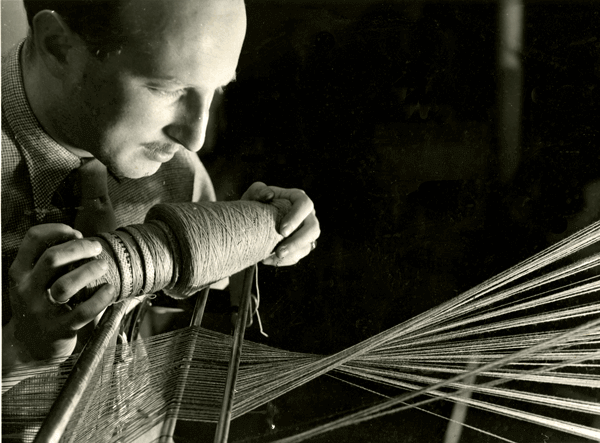
It takes courage to take on such a task. What were your primary fears when you started this undertaking, and how did you overcome them?
You have to be fearless! I have a great story to draw courage from. My grandfather Tibor left Budapest in 1937. His father had a hugely successful textile factory and employed about 700 people. The idea was that Tibor would just study in the UK, but instead he left Budapest and never returned due to the war. When he started his company in 1946, he was 30 years old and didn’t have much. The war was just over and there was a shortage of pretty much everything. Britain was still completely stuck in tradition. In fact, every single factor seemed to be working against him. With determination and guts, he managed to build a legacy that we are still benefitting from. I think entrepreneurship runs in our family. My father also has his own business, like both my grandfather and my great-grandfather.
Mostly you just have to get on with things and not think about fear too much. As an entrepreneur you must have a positive attitude and enough confidence to take on challenges every day.
You spent a great deal of time cataloguing your grandfather’s work and are now working on a book about your family history with your father. What are the lessons you have learnt digging through the family legacy?
One of inspiration! The archive includes such a wealth of history. One thing you realise is the sheer importance of 50s and 60s design history. The founding fathers of modernism in Britain are a product of that era. These days it’s quite hard to reinvent the wheel. It is more interesting to reinterpret the past, not that there is nothing new to be added. In the past, however, we had revolutionary progress in design. Now it is more of an evolution. For example, one of my grandfather’s trademarks in the 50s was taking photographs of nature and using them to make textile designs. At the time taking those photographs and printing them on textile was revolutionary.
What is your advice to other young entrepreneurs who have a family legacy to carry on? How can they manage their fears of failure and achieve growth?
You have to see legacy as an opportunity. I have this archive and everyone absolutely loves it. It is a unique opportunity. I think you also have to understand that you can’t just run into something, you must do your research. My first business enabled me to do this project, mostly because my parents were very encouraging. They completely supported my idea of being different.
Tharawat Magazine, Issue 25, 2015
[/ms-protect-content]


